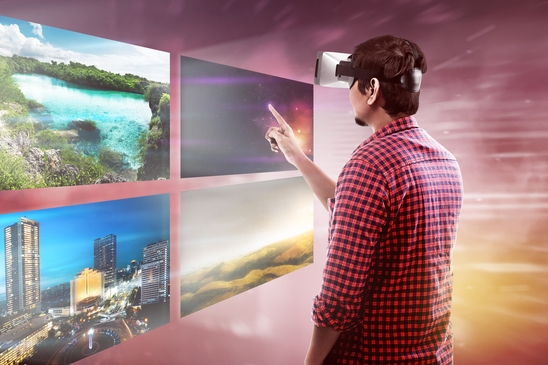
Unless you’ve been hiding under a rock in 1942, you will no doubt aware that the business world is currently very excited about the prospect of virtual or augmented reality. While the implications for the film, gaming and music industries seem obvious. It is the application within the work place, which will truly impact on the way we do business in the future.
A recent report from PricewaterhouseCoopers reveals that one in three U.S. based manufacturing companies are either using or planning to adopt VR over the next three years. While Goldman Sachs predict the industry will become an $80 Billion sector over the next decade.
The implementation of these new technologies will permeate every aspect of your business. Recruitment will no longer be a series of interviews, with a handful people, but an accessible platform for the whole team to interact or review. Real world scenarios will be presented to candidates and their reactions carefully monitored. While a virtual tour or typical day scenario could be presented to perspective employees.
Once recruited, training can be given in a similar manner. Dr. Thies Pfeiffer of the technology development conference Cluster of Excellence Cognitive Interaction Technology (CITEC) explains “With virtual reality, we can generate spaces and situations that help people learn to perform occupational duties,”
Indeed Pfeiffer goes on to suggest the cost and real world impact would be negligible, compared to on the job training “In many professions, certain tasks are performed over and over again to ensure that everything runs smoothly in emergencies or stressful situations. Training in ‘reality’ would require considerable resources, and students need a lot of space. In virtual reality, however, students and trainees can practice at their own pace until the processes become second nature.”
For the marketing sector, these developments represent an entirely new way of doing business. Presentations to clients can be done entirely in V.R. The events industry has already taken to creating 360 degree 3D mock ups of conference and concerts. Imagine being able to walk a client through an entire marketing campaign. A virtual tour for a point of sale, 360 degree story boards for video content or virtual interaction with their perspective customer base.
But it’s not just the content of a presentation, the technology allows interpersonal communication with people across the other side of the world, in a far more interactive and clear way than a Skype call. The software can integrate with google translate, meaning businesses can transcend language barriers to create worldwide partnerships, opening up broader territories for expansion.
This new technology will also give businesses a more flexible approach to working hours. An augmented reality meeting room, means employees and clients alike can work remotely, avoiding those late nights in the office and the hassle of trying to book meeting rooms. Important client meetings could be done without even having to put on a tie or anything at all, if that yours style!
VR may have once been something reserved for novelty use by gamers, but it is now an affordable, tangible and practical tool available to companies. Earlier adopters of this software will almost certainly set themselves apart from their competitors and may just be seen as innovators. If not, then it’s back to the Power Point presentations and conference calls with a three second delay.
